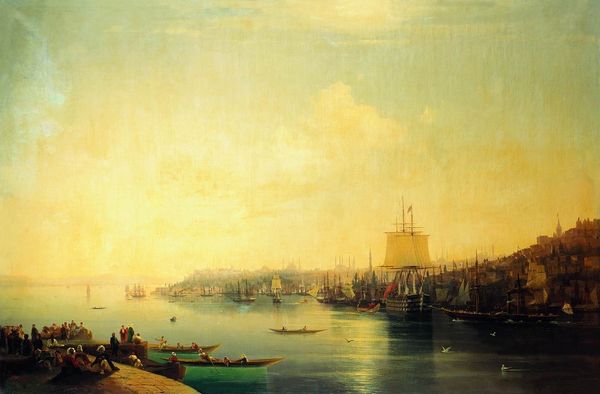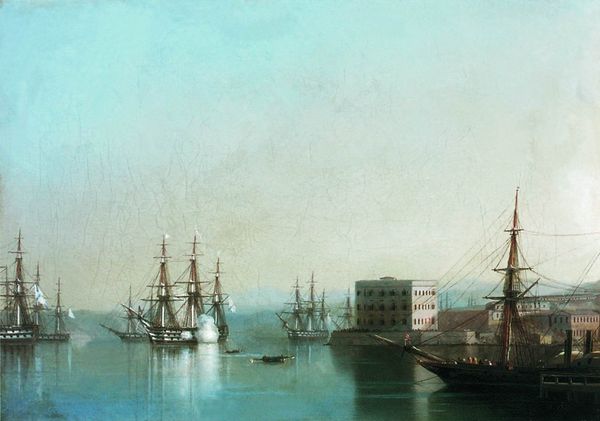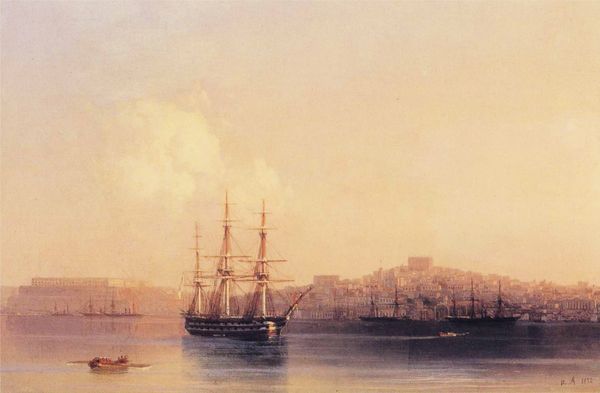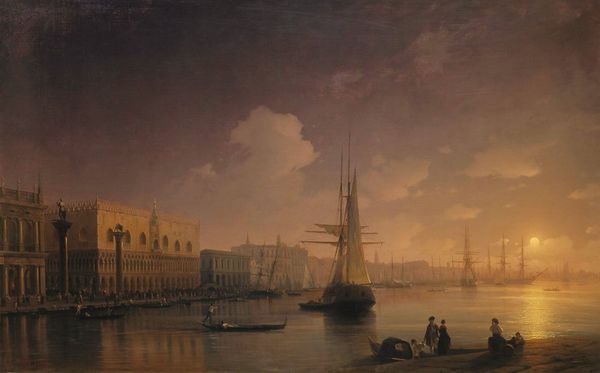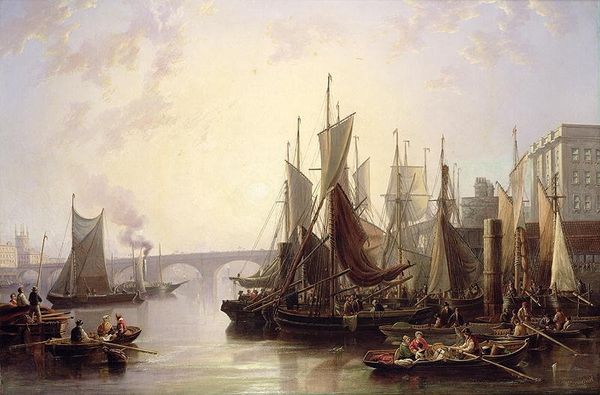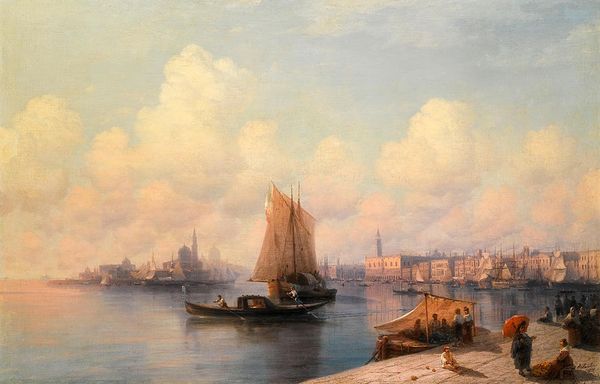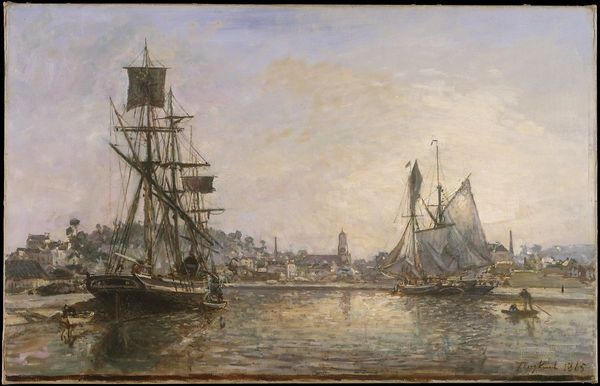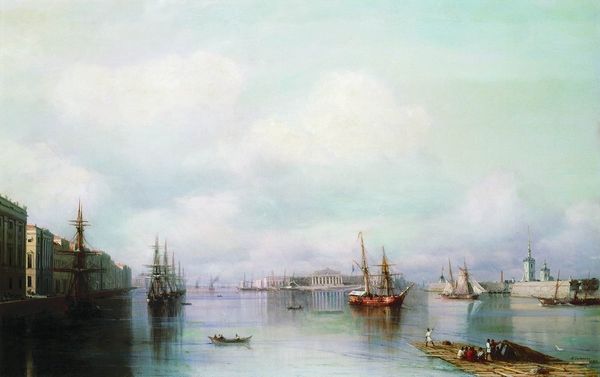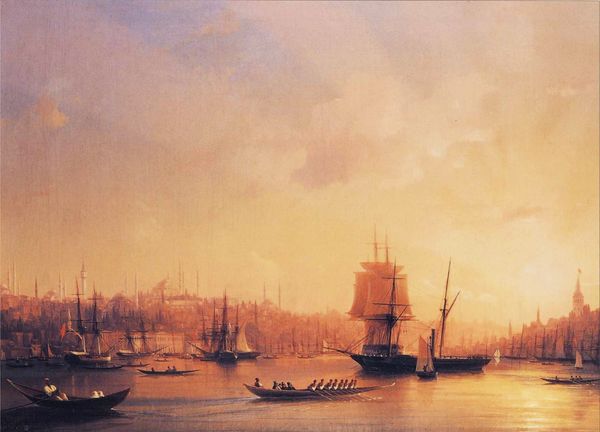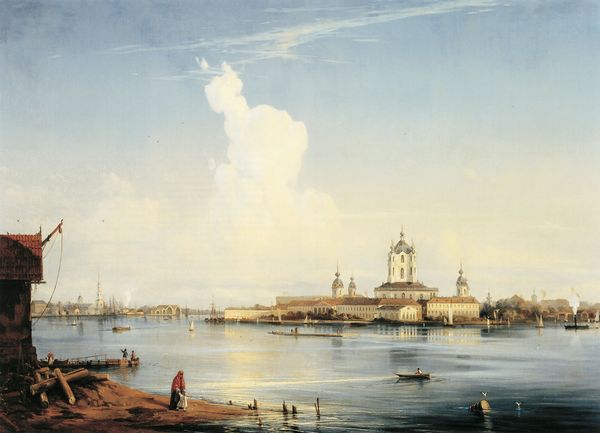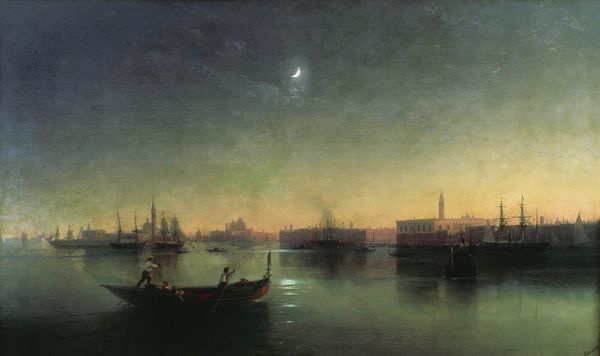
Copyright: Public domain
Art Historian: We’re looking at “View of seaside town,” a painting crafted in 1877 by Ivan Konstantinovich Aivazovsky. It’s an oil-on-canvas, depicting, as the title suggests, a town nestled by the sea. Curator: The muted tones create such a serene, almost melancholic mood. The way the light catches the sails of those ships is just breathtaking. But there’s also something about that cityscape in the background that feels… distant. Art Historian: Aivazovsky, known for his dramatic seascapes, often imbued his works with romantic sensibilities. The idealized portrayal of the sea and the town here certainly fits that mold. But it is important to acknowledge how romanticism served certain imperial projects at this time. The vision it produces tends to obfuscate social stratifications in an attempt to manufacture unifying traditions. Curator: Exactly, what histories are whitewashed by this idyllic imagery? Are we supposed to simply admire the composition and ignore the labor that went into building that town, manning those ships? Who profits from this “view”? It’s vital we consider that what we aren't seeing is just as important. Art Historian: Absolutely. To understand Aivazovsky, it’s also important to situate him within the context of 19th-century Russian art and its relationship to state patronage. Many artists of this period were producing images that, intentionally or not, supported expansionist narratives. It’s why some people claim he should be interpreted as a Russian marine painter while others consider him a Ukrainian one. Curator: I’m also wondering about access to the sea at the time. Was this beautiful seascape available to everyone, or were there class and social barriers dictating who could actually enjoy it? These "views" often came at a great price for many people excluded from them. Art Historian: A fascinating and essential point. These depictions of prosperity and peace can mask complex realities of resource control, especially regarding waterways and coastal territories. Looking closer challenges us to engage more thoroughly with the historical setting. Curator: This piece, though visually pleasing, invites us to question the narratives it presents and the ones it obscures. Art Historian: I agree. By recognizing how such artworks operate within broader cultural and political landscapes, we can begin to uncover complex realities hidden beneath the surface of idyllic depictions.
Comments
No comments
Be the first to comment and join the conversation on the ultimate creative platform.

